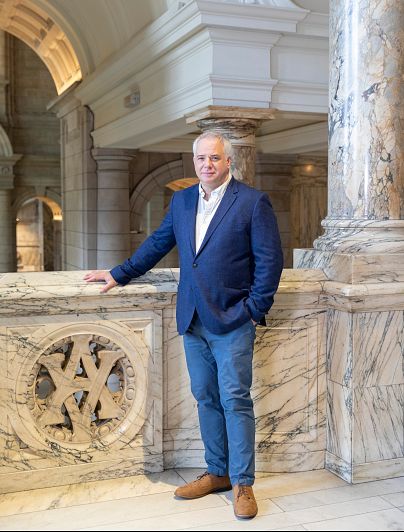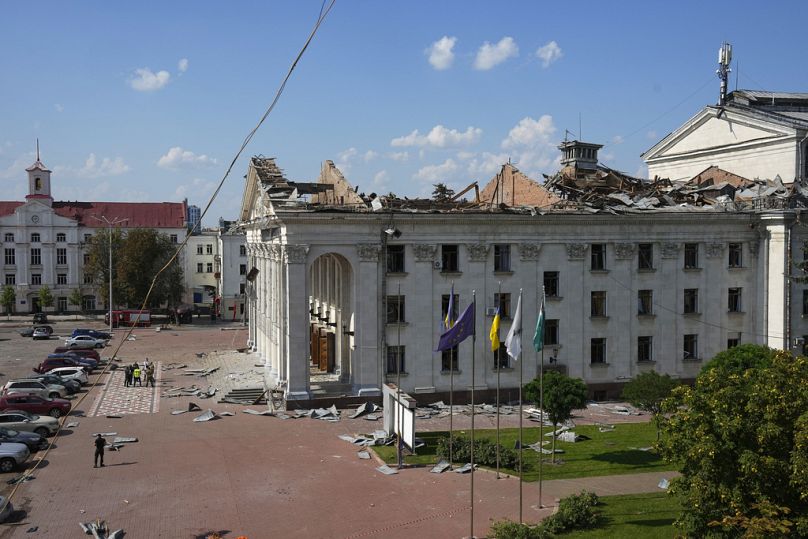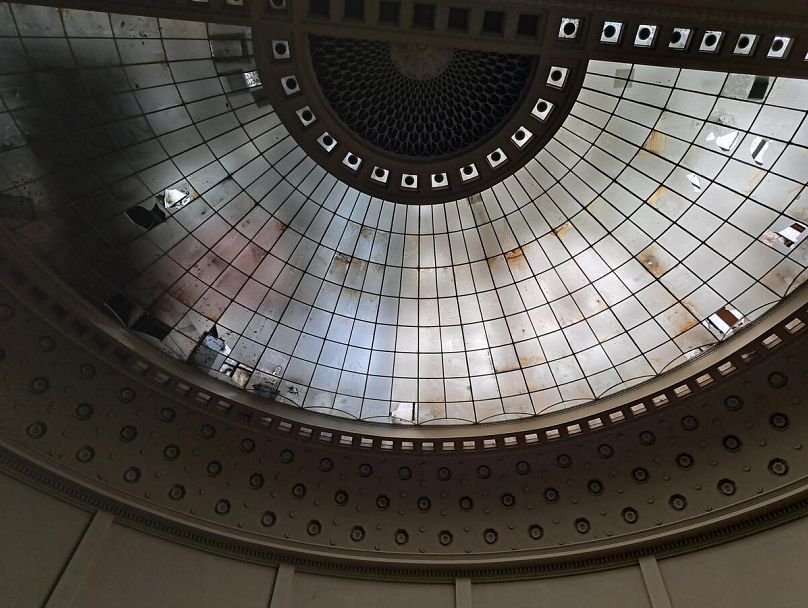Euronews Culture meets the former Scotland Yard detective leading the Victoria and Albert Museum’s response to threats to the world’s cultural heritage sites.
 ADVERTISEMENT
ADVERTISEMENT
In a small office in London’s Victoria and Albert Museum (V&A) sits Vernon Rapley, Director of Cultural Heritage Protection and Security. He also heads a global initiative to protect the world’s cultural heritage from threats, including climate change and conflict.
With a background in international law enforcement, he’s uniquely qualified to lead the V&As Culture in Crisis Programme to preserve some of the world’s most precious cultural artefacts. He spent 24 years as a detective at Scotland Yard, ten as the head of the Arts and Antiques Unit, and was part of the Interpol force tracking the illicit trade in cultural goods.
Developed in the wake of the cultural cleansing of many areas of Syria and Iraq by Isis (Islamic State in Iraq and Syria) a decade ago, Culture in Crisis was the brainchild of Martin Roth, the urbane former V&A director. Roth was so appalled by the destruction, he felt it important museums take a stand and actively do something to protect global heritage, and so the Culture in Crisis Programme was born.
In an echo of the 2014 Hollywood movie The Monuments Men starring George Clooney, depicting the real-life Allied historians, architects, museum curators and professors who worked to protect the world’s cultural heritage during the Second World War, the Crisis in Conflict Programme is a global network of ordinary people doing extraordinary things.
Harnessing technology was vital to aid collaboration
Using technology to smooth the path to quick relationship building drove the 2014 launch of the Culture in Crisis Portal. It was to be a one-stop-shop for those fighting to preserve their national buildings, collections, languages and texts.
The tech was a game changer. It allowed museums and heritage organisations to register their preservation projects, search for synergies with other projects, develop networks, work collaboratively, and raise much needed funds. There are now well over a thousand projects on the site.
Rapley explained to Euronews Culture the difference the portal has made: “Culture in Crisis would hear from people going to work in a particular country or region, and we knew of people who’d just returned from that very country, yet the two of them didn’t know of each other. There’s so much you can learn by speaking with people, or sharing information, to make your operation so much more effective.
“The portal is very much about encouraging people to do things together, not with us all the time, but to encourage them by giving them the information they need to do great things.
“It’s more like a dating site. It’s designed to pull you in, give you the connection you need, and then let you go off and do things together.”
Cultural heritage is under attack
The need for coordinated, collaborative action to protect the world’s cultural treasures has never been greater. In January, a UNESCO report verified damage to 435 cultural sites in Ukraine since February 2022.
At least 53 have been severely damaged or destroyed, including the Ivankiv Historical and Local History Museum and its collection; the Holy Mountains Lavra, a 17th-century monastery in eastern Ukraine; and the historic centre of Chernihiv, which is on the Tentative List for World Heritage status.
Work is underway to preserve Teachers House, a symbol of Ukrainian independence that was the venue for the first Ukrainian People’s Republic parliament in 1918. Hit by shockwaves from Russian rocket attacks on Kyiv, 500 meters of glass, including the building’s iconic dome, were damaged.
Despite the immediate and devastating impact of conflict, Rapley is quick to point out that threats to our cultural heritage come in many forms.
“The crisis is not about war, it’s about any form of natural crisis, as well as human conflict that is causing the destruction. There are a very broad range of concerns that are getting broader by the year.”
To prove his point, the portal includes a project looking at the impact heritage tourism poses to cultural sites across the globe. Locations in Spain, Ireland and India are among those being probed to better understand how tourism can be conducted in an environmentally, economically and culturally sustainable way.
Should other cultural institutions be doing more?
Rapley, who leaves the V&A in October after 14 years, is proud of the work the museum does to help bring people and projects together, but thinks other cultural institutions could do more.
“I do feel that more museums with global collections should have some commitment to this and be investing some time or resource into assisting the work. I would like others to do it, but I’d like them to find their place. I’d like them to do something that compliments or supports existing efforts.
“This is not a call to arms. It’s not that every museum should dedicate one or two people to it, but I think museums and heritage organisations should at the very least be looking and thinking what can we do?”
The Programme has the backing of current V&A director Tristram Hunt, an ambition to develop the world’s largest database of cultural heritage preservation projects, and new threats emerging every year, compelling yet more ordinary people to do extraordinary things.













